Sensitivity Labels
Sensitivity Labels
What are Sensitivity Labels?
Sensitivity Labels are a powerful feature of Microsoft 365, that allows us to classify all information in a way that shows how sensitive the data is. This greatly reduces the risk of accidentally or deliberately sharing confidential data with those who should not have access to it, including people from outside the university.
Importance of Sensitivity Labels
- Data Protection: Sensitivity labels help prevent data breaches by controlling access to sensitive information.
- Compliance: Ensures the university complies with legal and regulatory requirements regarding data protection.
- Risk Management: Reduces the risk of data leakage and misuse.
- Data Management: Simplifies data management by clearly categorizing information based on its sensitivity.
Types of Sensitivity Labels
The University uses a traffic light system, Green, Orange and Red, with the following sensitivity labels:
- Public: Information that can be freely shared with anyone inside or outside the organization. No restrictions apply.
- Internal: Information intended for internal use only. Should not be shared outside the organization without proper authorization.
- Confidential: Sensitive information that requires protection and should only be shared with specific individuals on a need-to-know basis.
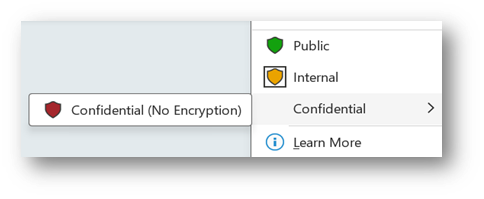
How to Use Sensitivity Labels
In Microsoft Office Applications:
Word, Excel, PowerPoint:
- Open the document.
- Go to the "Home" tab.
- Click on "Sensitivity" in the toolbar.
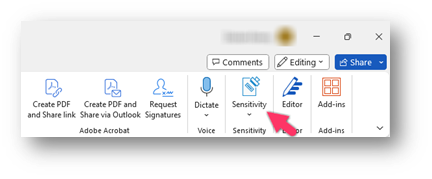
- Choose the appropriate label from the dropdown menu.
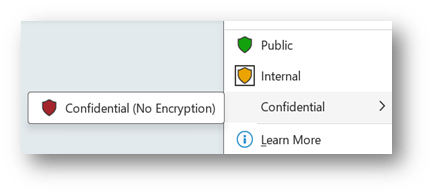
In SharePoint and OneDrive:
For existing documents:
- Navigate to the document library.
- Select the document(s).
- Click on "Details" in the toolbar.
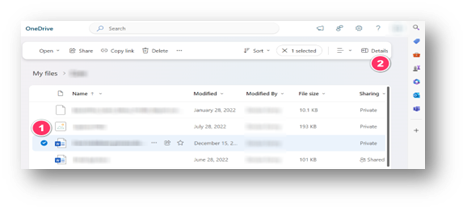
- Under "Sensitivity," select the appropriate label.
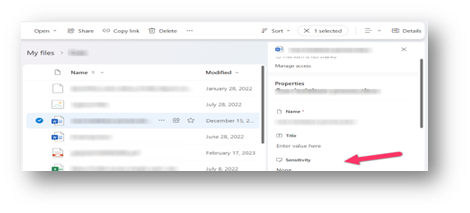
For new documents:
- When saving or uploading a new document, you will be prompted to select a sensitivity label. Choose the appropriate label before saving/uploading
Best Practices for Using Sensitivity Labels
Evaluate the Content: Before applying a label, evaluate the content of the document or email to determine the appropriate sensitivity level.
Be Consistent: Apply sensitivity labels consistently to ensure uniform data protection across the organization.
Review Regularly: Regularly review and update sensitivity labels as the sensitivity of information can change over time.
Training: Attend regular training sessions to stay updated on best practices and any changes to our sensitivity labelling policies.
Data Loss Prevention
Sensitivity labels can be linked to Data Loss Prevention (DLP) policies to enhance data protection. Data loss prevention is a security solution that identifies and helps prevent unsafe or inappropriate sharing, transfer, or use of sensitive data. It can help TU Dublin monitor and protect sensitive information across on-premises systems, cloud-based locations, and endpoint devices. It also helps us achieve compliance with regulations such as General Data Protection Regulation (GDPR). You can find more information on how we use DLP within TU Dublin here.
FAQs
Do TU Dublin have a policy for data classification?
Yes. You can find the Data Classification Policy here. This policy outlines guidelines for handling different types of data within the university. Specifically, it covers the classification of data as public, internal, and confidential.
I am Missing the Sensitivity Labels option. What do I do?
Ensure you have the latest version of Microsoft Office installed. If the issue persists, contact IT support.
Can I change a sensitivity label after applying it?
Yes, if you are the document owner or have the correct permission to the document you can change the label of the sensitivity. Follow the same steps to apply a new label.
What should I do if I am unsure about which label to apply?
Consult with your supervisor or refer to our data classification policy. When in doubt, choose a more restrictive label.
Do sensitivity labels affect document formatting?
No, applying a sensitivity label does not change the formatting of the document.
